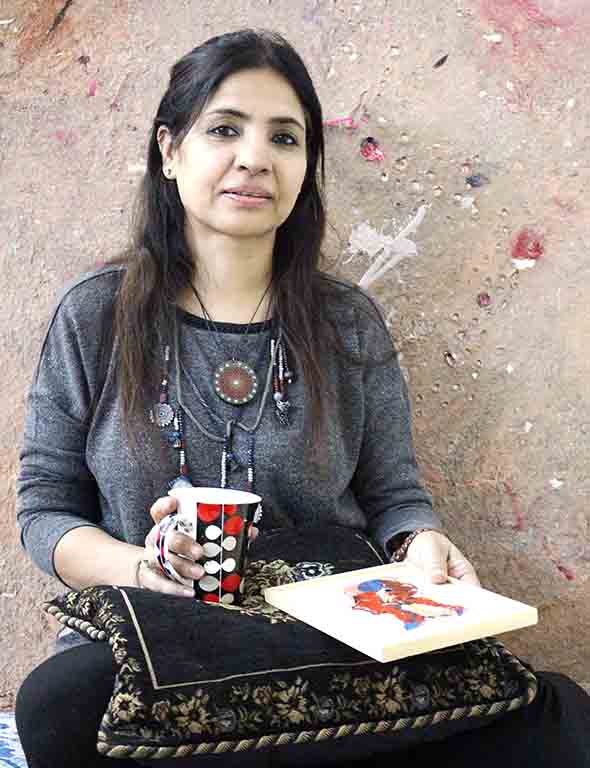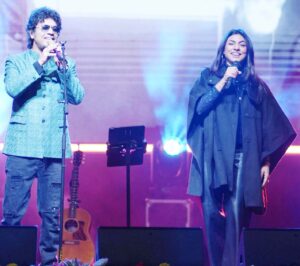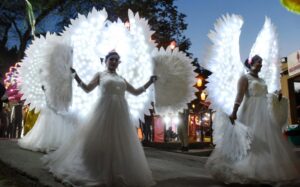Sands of Time by Rashmi Khurana Curated by Rahul Bhattacharya

New Delhi News, 20 Dec 2019 : Rashmi Khurana’s journey as an artist has been like that of a river flowing through time through an intuitive sense of destination. Gushing through, slowing down, accumulating, letting go, reflecting cultures and always breathing life. ‘Sands of Time’ is a body of work that stands on the edge of painterly abstraction, blurring boundaries between painting, making, cleansing and healing. It embodies the time spent in her studio, the physicality of the hours, the internal struggles for a new language, the residues of an older body of work, dried paint, torn paper, canvases. This body began taking shape as Rashmi spent time house cleaning and decluttering her studio after her previous solo show. The urge to remove and to create co-existing within her as she went through hours of tearing, scrubbing, washing; trying to create space in her studio and in her head. Over the years Rashmi has grown to be sensitive to the ‘everyday aesthetics’, and possibilities of beauty in our environment. This ability to (fore) see the beauty in torn pieces of paper, in scrapped up piles of dried paint, in a bundle of rope found somewhere in the studio is the essence of this show.
The very haptic, amorphous and organic forms of paper pulp almost add a sculpture-like quality to the work transforming it into a spatial element. The connection between the paintings can be felt strongly as the viewer moves, as if, through an invisible monolith, from which the works have been carved out. One witness becoming a part of the work through a very personal sense of engagement that develops with the paintings. The exposed material and the mold travel to the sights of landscapes, through time and memories, transforming the experience to be a profound and personal one.
Her abstraction has the ability to bring joy and pain onto the same plane co-existing not in a quiet harmonious way, but in deep conversations with each other. Like the river, this body of work is fluid, not fixed within a single kind of process or conceptual approach. The works are united in their source inspiration, bound together by time and the tracings of the same energy with the freedom to reflect the mood of the seasons. The sense of beauty that is proposed through these works is not just limited to the surface, the object, the ‘painting’. It is rooted deeply in the process of making, for the artist it is almost like a restorative act in the spirit of Kintsugi, the Japanese art of repairing broken pottery by mending the areas of breakage with lacquer dusted or mixed with gold. Torn paper, pulped, mashed, strengthened embedded, painted, textured, protected and brought back as art. A lot of the ‘actions’ that give form to Rashmi’s ‘paintings’ come from actions you would associate with cooking or stitching and they embed the narrative of her femininity.
Rashmi Khurana Profile
Art and artists are like music and its magical notes, incomplete without each other and in sync with each other. Rashmi Khurana is a self-taught artist, painting for the love of art and expression. She is a trained psychologist who adopted painting as a way of life and followed her passion with a few short courses and workshops in Painting, Art History, Print-Making with national and international artists. Rashmi explains her art, “My way of art practice is abstract, as it gives me complete freedom of formulation and expression. Through the process of painting, I want to explore and discover an unfettered expression guided by the tenants of intuition and experimentation, as if liberating my imagination to produce illogical and startling elements.”
She also served as an art teacher at Mirambika School – Aurobindo Ashram, New Delhi, where she got exposed to a philosophy of life that allowed her to complete space to express herself creatively. It is through these interactions, and in varying surroundings that her skills as a painter evolved. Like most painters, Rashmi started her painting stint with figurative landscapes, flowers, and people paintings, however, she soon realized that her calling was Abstract. Abstract paintings helped her channelize her energies, and her paintings blur boundaries between painting, making, cleansing and healing easy. It embodies the time spent in her studio, the physicality of the hours, the internal struggles for a new language, the residues of an older body of work, dried paint, torn paper, canvases. blurring boundaries between painting, making, cleansing, and healing. It embodies the time spent in her studio, the physicality of the hours, the internal struggles for a new language, the residues of an older body of work, dried paint, torn paper, canvases.
When I paint I am engrossed in the colors, the canvas and how it is shaping up, “And painting becomes a performance, me looking at myself, getting closer to the canvas, then stepping back, reflecting, spreading hand movements and playing with g






